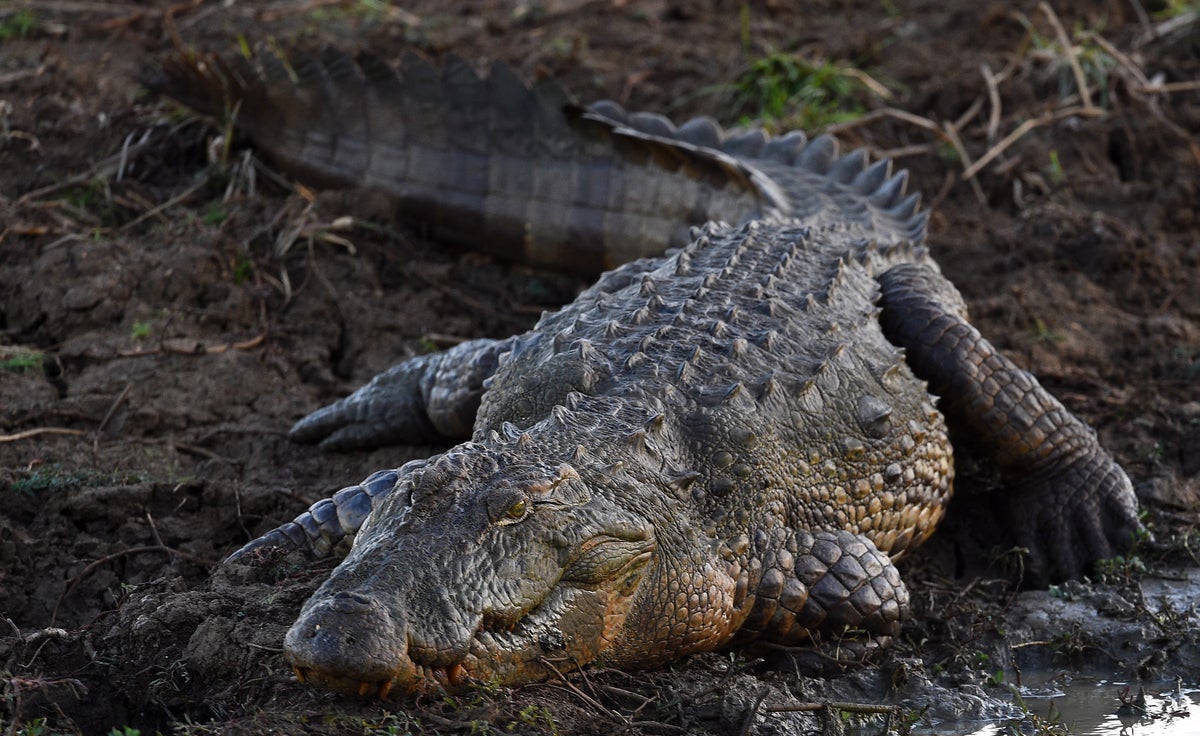
Scientists have discovered two new crocodile species that lived between 18 and 15 million years ago and likely preyed on early humans, an advance that sheds more light on the evolution of the reptiles.
These crocodiles, which may have grown to over 3.5m (12 ft) in size, formerly inhabited east Africa between 18 and 15 million years ago before “inexplicably becoming extinct”, scientists from the University of Iowa in the US say.
The new species, known as giant dwarf crocodiles – Kinyang mabokoensis and Kinyang tchernovi – are similar to the dwarf crocodiles found in central and western Africa, according to the study, published in the journal The Anatomical Record.
However, while the dwarf crocodiles rarely grow longer than 4 or 5 ft, scientists say their prehistoric ancestors could reach lengths of up to 12 ft (3.6m), making them among the most dangerous threats to any animal they came across.
“These were the biggest predators our ancestors faced. They were opportunistic predators, just as crocodiles are today,” study co-author Christopher Brochu, professor in the Department of Earth and Environmental Sciences at the University of Iowa, said in a statement.
“It would have been downright perilous for ancient humans to head down to the river for a drink,” Dr Brochu added.
The new species had big, conical teeth and short, deep snouts, the study noted.
Instead of opening straight upward like contemporary crocodiles, researchers analysing the fossils of these reptiles say their noses opened somewhat up and to the front.
Scientists say the crocodiles likely waited for prey in the forest for the majority of the time instead of being in the water.
“They had what looked like this big grin that made them look really happy, but they would bite your face off if you gave them the chance,” Dr Brochu said.
The crocodiles lived during the early to middle Miocene period 18 million and 15 million years ago in the East Africa Rift Valley, in parts of present-day Kenya at a time when the region was largely blanketed by forests, scientists say.
However, they say both species may have gone extinct starting about 15 million years ago, likely due to less rain fall in the area because of climate change.
Researchers suspect reduced rainfall in the region caused the forests to gradually disappear and be replaced by grasslands and mixed savanna woodlands.
“Modern dwarf crocodiles are found exclusively in forested wetlands. Loss of habitat may have prompted a major change in the crocodiles found in the area,” Dr Brochu, who has studied ancient and modern crocodiles for more than three decades, said.
These environmental changes, scientists speculate, are also linked to the rise of the larger bipedal primates that gave rise to modern humans.
However, researchers say their theories on how the Kinyang died out require further testing since they are unable to determine precisely when the animals became extinct.
They say the gap in the fossil record between Kinyang and other crocodile lineages that came onto the scene beginning about seven million years ago also remains to be studied.







